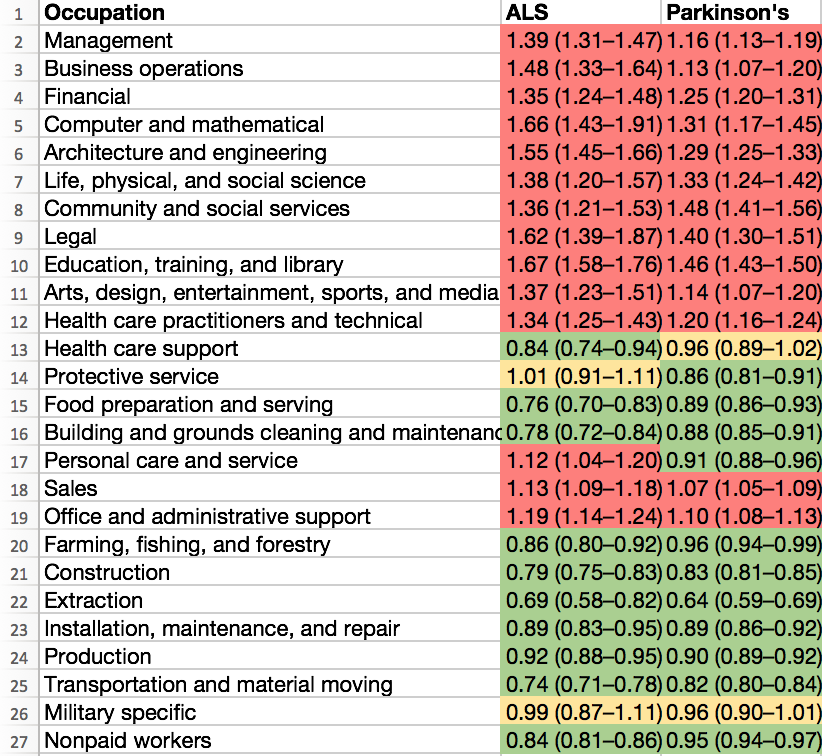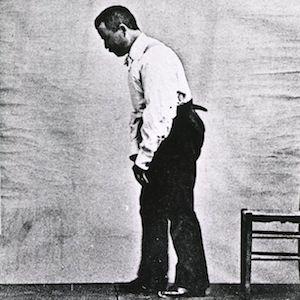The causes of amyotrophic lateral sclerosis (ALS or Lou Gehrig's disease) and Parkinson's disease are not known. Both diseases are likelier to occur in older white men, and it is thought that environmental exposures and lifestyle choices may play a role. For instance, smoking is linked to ALS and pesticides to Parkinson's. However, smoking and caffeine appear to protect against Parkinson's.
New data from the CDC appears to challenge some of this conventional wisdom. The authors collected as much mortality data as was available to them from 1985 to 2011. They tallied the number of deaths from ALS and Parkinson's, and sorted them by occupational group. In total, the researchers analyzed more than 12 million deaths across 30 U.S. states.
Their main findings are summarized in the chart below. The data is presented as standardized proportionate mortality ratios. Ratios above 1.0 (colored red) indicate a link to the disease; ratios that are 1.0 (or whose confidence intervals cover 1.0 and are colored yellow) are not linked to the disease; and ratios that are less than 1.0 (colored green) suggest some sort of "protective" effect.

As shown, the occupations that are linked to the greatest proportion of ALS and Parkinson's deaths are mostly white-collar in nature, such as management, financial, architectural, computing, legal, and education jobs.
The conventional wisdom would suggest that occupations associated with low socioeconomic status -- such as construction, extraction, and maintenance jobs -- would be linked to the greatest number of ALS and Parkinson's deaths because of workers' environmental exposures to various chemicals. But that's not what the CDC found. Instead, they found that these jobs were linked to a smaller number of deaths than would be expected.
Why? The authors don't know. They correctly note that the data suffers from some serious drawbacks that limit their ability to draw firm conclusions, such as a lack of information on individual exposures. The occupation groups are also broad: Farmers are lumped into a category called "farming, fishing, and forestry." It still may be possible that pesticides are a cause of ALS or Parkinson's in farmers, but an association would not be discovered in this analysis because farmers are categorized with other workers who don't use pesticides.
Finally, it's possible that other causes of death lower the proportionate mortality ratio for some occupations, such as those who work in the extraction industry. If these workers are likelier to die from lung cancer, for instance, then their death rate from ALS and Parkinson's would be lower.
The CDC's findings were surprising. If they are replicated by others, then it would suggest that researchers may be totally in the dark in regard to the cause of most cases of ALS and Parkinson's.
Source: Beard JD, Steege AL, Ju J, Lu J, Luckhaupt SE, Schubauer-Berigan MK. "Mortality from Amyotrophic Lateral Sclerosis and Parkinson’s Disease Among Different Occupation Groups — United States, 1985–2011." MMWR 66 (27): 718-722. Published: 14-Jul-2017. DOI: 10.15585/mmwr.mm6627a2




